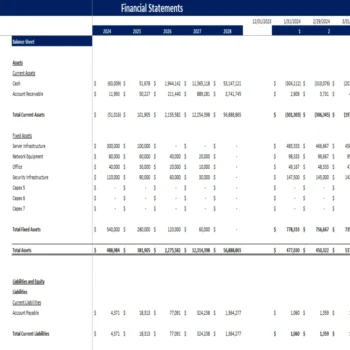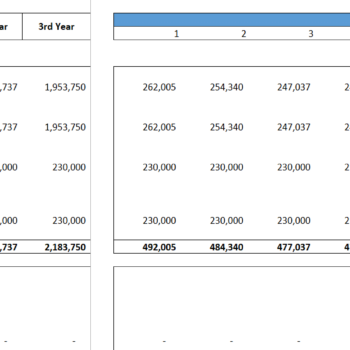Customer Acquisition Cost (CAC) is a fundamental metric used by businesses to gauge the effectiveness of their marketing and sales strategies. It represents the total cost of acquiring a new customer, taking into account all the expenses involved in marketing and sales activities. This metric is crucial for understanding how much a business is spending to gain one customer and plays a vital role in determining the overall health and profitability of a company.
CAC is calculated by dividing the total costs associated with acquiring new customers (including advertising expenses, salaries of sales and marketing teams, and other related costs) by the number of customers acquired in the same period these costs were incurred. This calculation provides businesses with a clear picture of their investment in customer acquisition and helps in making informed strategic decisions.
Understanding CAC is essential for businesses to ensure they are not overspending to acquire new customers. A high CAC can indicate that a company’s marketing and sales efforts are not as efficient as they could be, which can lead to unsustainable growth. Conversely, a low CAC suggests that a company is acquiring customers in a cost-effective manner, which is typically a sign of a healthy business model.
CAC is particularly important in the context of the customer lifetime value (LTV). Businesses aim to have a CAC much lower than LTV to ensure a positive return on investment. This relationship between CAC and LTV helps businesses in budget allocation, forecasting future revenue, and scaling operations effectively.
Moreover, tracking CAC over time and across different marketing channels and campaigns allows businesses to refine their marketing strategies. By understanding which channels and tactics yield the lowest CAC, companies can optimize their marketing spend, focus on the most profitable areas, and adjust or discontinue less effective initiatives.
In summary, Customer Acquisition Cost is a critical metric that helps businesses evaluate the cost-effectiveness of their marketing and sales strategies, manage budgets efficiently, and drive sustainable growth. It is an indispensable tool for any business looking to optimize its customer acquisition efforts and improve its bottom line.
-
Browse by Categories, Browse by Industry, Consulting Business, Consulting Business Financial Model, Deals, Financial Excel Model, Financial Excel Template, Small Online Business Excel Financial Model Projection, Startup, Startup Financial Model
Accounting Software Excel Financial Model
Original price was: $300.$199Current price is: $199. -
Browse by Categories, Browse by Industry, Financial Excel Model, Financial Excel Template, financial forecasting modeling, Financial Forecasting Models, financial model, Financial model excel template, financial modeling, Health care Pitch Deck Template, Healthcare Financial Model, Healthcare Industry, Healthcare Industry Business Plan, Healthcare Industry Financial Model
Smart Hospital Excel Financial Model Template
Original price was: $190.$95Current price is: $95. -
Browse by Categories, Browse by Industry, Financial Excel Model, financial forecasting modeling, Financial Forecasting Models, financial model, Financial model excel template, financial modeling, Healthcare Industry, Healthcare Industry Financial Model, Services/ Consulting, Services/ Consulting Financial Model
Fitness Center Excel Financial Model
Original price was: $190.$95Current price is: $95. -
Browse by Categories, Browse by Industry, Deals, Financial Excel Model, Financial Excel Template, financial forecasting modeling, Financial Forecasting Models, Financial model excel template, financial modeling, SaaS Industry, SaaS Industry Financial Model, Software Business Financial model, Startup
Customer Success Software Excel Financial Model Template
Original price was: $300.$100Current price is: $100. -
Browse by Categories, Browse by Industry, Deals, Email Management Financial Model, Financial Excel Model, financial modeling, SaaS Industry, SaaS Industry Financial Model, Small Online Business Excel Financial Model Projection, Software Business Financial model
E-Mail Management Software Excel Financial Model
Original price was: $300.$210Current price is: $210. -
Browse by Categories, Browse by Industry, Deals, Financial Excel Model, financial modeling, SaaS Industry, SaaS Industry Financial Model, Small Online Business Excel Financial Model Projection, Software Business Financial model
Calendar Management Software Excel Financial Model
Original price was: $300.$100Current price is: $100. -
Browse by Categories, Browse by Industry, Deals, Email Management Financial Model, Financial Excel Model, financial modeling, SaaS Industry, SaaS Industry Financial Model, Small Online Business Excel Financial Model Projection, Software Business Financial model
E-mail Tracking Software Excel Financial Model
Original price was: $300.$210Current price is: $210. -
Browse by Categories, Browse by Industry, Deals, Entertainment Industry, Entertainment Industry Financial Model, Financial Excel Model, financial modeling, Video Subscribing
SVOD Business Excel Financial Model
Original price was: $500.$350Current price is: $350.

















